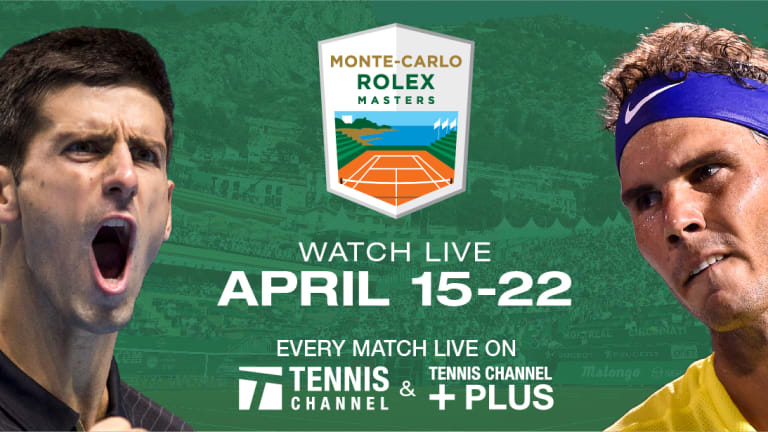As the clay-court circuit begins in earnest at Monte Carlo this week, the central figure as always will be a Spanish dynamo with boundless competitive spirit, unmistakable brio and a lethal brand of topspin artistry named Rafael Nadal. The estimable left-hander will be looking to reassert himself after an injury-plagued season, remind seasoned observers why he is almost indisputably the greatest ever to play on the dirt, and impose himself customarily on a surface that suits him to the hilt.
Learned followers of the sport will be observing Nadal with heightened interest as he chases his eleventh career crowns not only in Monte Carlo but also at Barcelona and, most importantly, Roland Garros. And yet, while Nadal will be ubiquitous in the coming weeks—striving to make more history, hoping to hit a multitude of targets, determined to make his presence known—a fellow from Switzerland will be far away from the center of the tennis universe.
Roger Federer will be tending to his own knitting and needs. The Swiss Maestro has wisely elected to skip the entire clay-court campaign, as he did a year ago. Why mess with a winning formula? A year ago, Federer had been dominating the game majestically, rallying from 1-3 down in the fifth set of the Australian Open final against Nadal to sweep five consecutive games for his fifth title Down Under. Buoyed by that stunning triumph after being gone from the game for six months leading up to the 2017 season, Federer sparkled. After a brief setback when he failed to exploit three match points in Dubai against Evgeny Donskoy, this revitalized competitor with the wide-ranging arsenal and the soaring imagination swept the hard-court Masters titles at Indian Wells and Miami. He was ruling tennis ruthlessly, comprehensively and relentlessly.
But Federer refused to allow his stirring run to cloud his judgment or collide up against his priorities. He realized that competing on the clay was a risky proposition. So he stepped aside, trained, recharged his engines, and skipped the entire 2017 clay season. That decision was demonstrably beneficial to Federer. Although he suffered a surprising loss to Tommy Haas (then ranked No. 302 in the world) in the round of 16 at Stuttgart, the Swiss was victorious in Halle, ousting Alexander Zverev for the title.
Still fresh yet fully prepared, Federer moved onto the lawns at the All England Club and won a record eighth Wimbledon singles crown over Marin Cilic. Over the fortnight in Great Britain, he did not drop a set. Would he have prevailed at Wimbledon if he had played a few red clay tournaments, including Roland Garros? I have my doubts.
Stories of the Open Era - Federer/Nadal rivalry:
